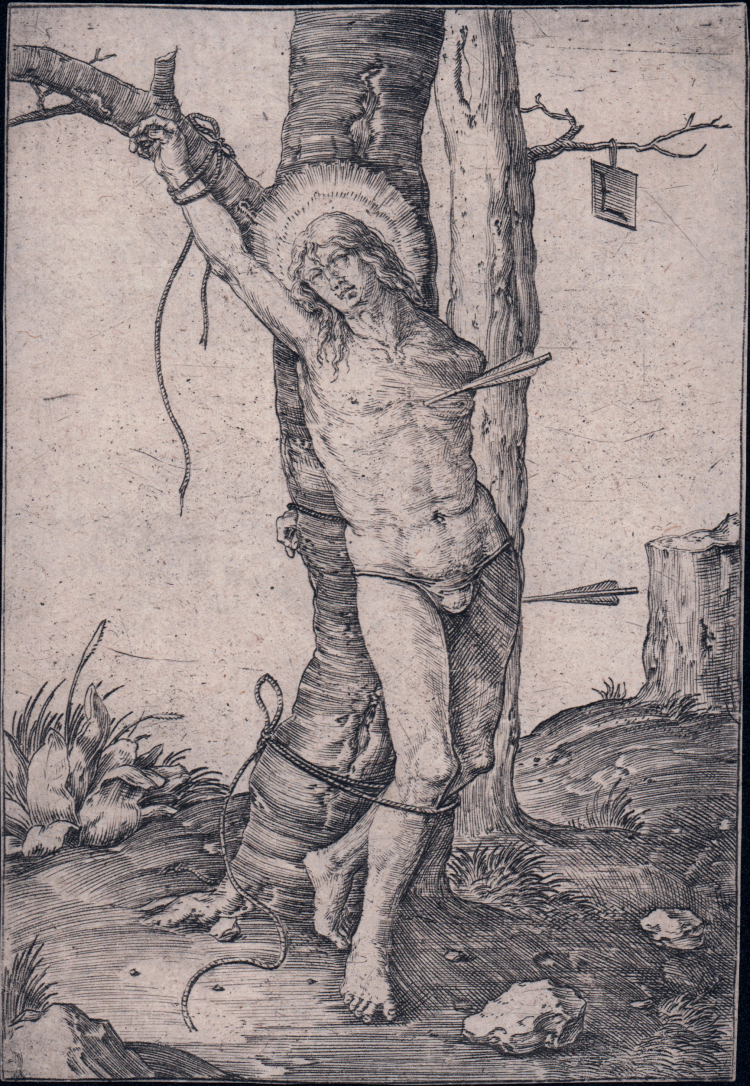



| Reference: | S40823 |
| Author | Lucas van LEYDEN |
| Year: | 1510 ca. |
| Measures: | 73 x 105 mm |



| Reference: | S40823 |
| Author | Lucas van LEYDEN |
| Year: | 1510 ca. |
| Measures: | 73 x 105 mm |
Engraving, 1510 circa, signed with monogram L on tablet at upper right. Only state.
Good example in the second variant, of three according Filedt Kok (The New Hollstein), with minor scratches, trimmed close to platemark, in very good condition.
|
Bartsch VII.398.115; The New Hollstein, p. 117 n. 115 (b); TIB, 115; Salamon, n. 39.
|
Lucas van LEYDEN (Leida 1494 - 1533)
|
Named either Lucas Hugensz or Jacobsz, was a Dutch engraver and painter, born and mainly active in Leiden, who was among the first Dutch exponents of genre painting and is generally regarded as one of the finest engravers in the history of art. He was the pupil of his father, whose works are unknown, and of Cornelis Engelbrechts. They were both painters whereas Lucas himself was principally an engraver. Where he learnt engraving is unknown, but he was highly skilled in that art at a very early age: the earliest known print by him (Mohammed and the Murdered Monk) dates from 1508, when he was perhaps only 14, yet reveals no trace of immaturity in inspiration or technique.
In 1514 he entered the Painters' Guild at Leiden. He seems to have travelled a certain amount, and visits are recorded to Antwerp in 1521, the year of Dürer's Netherlandish journey, and to Middelburg in 1527, when he met Gossaert. An unbroken series of dated engravings makes it possible to follow his career as a print-maker and to date many of his paintings, but no clear pattern of stylistic development emerges. Dürer was the single greatest influence on him, but Lucas was less intellectual in his approach, tending to concentrate on the anecdotal features of the subject and to take delight in caricatures and genre motifs. Carel van Mander characterizes Lucas as a pleasure-loving dilettante, who sometimes worked in bed, but he left a large oeuvre, in spite of his fairly early death, and must have been a prodigious worker.
|
|
Bartsch VII.398.115; The New Hollstein, p. 117 n. 115 (b); TIB, 115; Salamon, n. 39.
|
Lucas van LEYDEN (Leida 1494 - 1533)
|
Named either Lucas Hugensz or Jacobsz, was a Dutch engraver and painter, born and mainly active in Leiden, who was among the first Dutch exponents of genre painting and is generally regarded as one of the finest engravers in the history of art. He was the pupil of his father, whose works are unknown, and of Cornelis Engelbrechts. They were both painters whereas Lucas himself was principally an engraver. Where he learnt engraving is unknown, but he was highly skilled in that art at a very early age: the earliest known print by him (Mohammed and the Murdered Monk) dates from 1508, when he was perhaps only 14, yet reveals no trace of immaturity in inspiration or technique.
In 1514 he entered the Painters' Guild at Leiden. He seems to have travelled a certain amount, and visits are recorded to Antwerp in 1521, the year of Dürer's Netherlandish journey, and to Middelburg in 1527, when he met Gossaert. An unbroken series of dated engravings makes it possible to follow his career as a print-maker and to date many of his paintings, but no clear pattern of stylistic development emerges. Dürer was the single greatest influence on him, but Lucas was less intellectual in his approach, tending to concentrate on the anecdotal features of the subject and to take delight in caricatures and genre motifs. Carel van Mander characterizes Lucas as a pleasure-loving dilettante, who sometimes worked in bed, but he left a large oeuvre, in spite of his fairly early death, and must have been a prodigious worker.
|